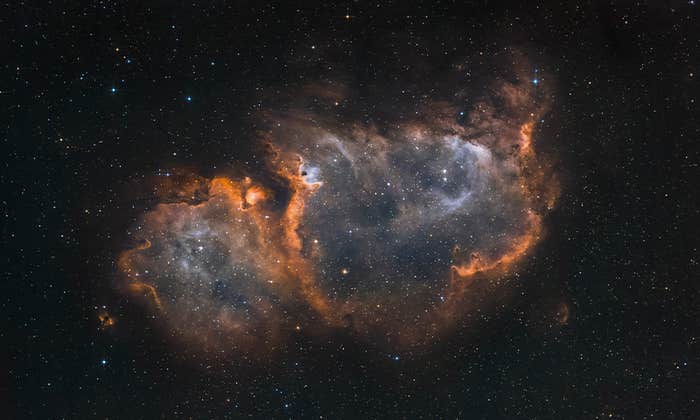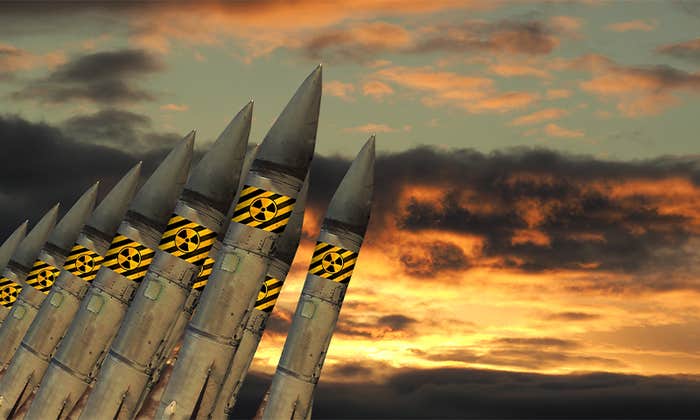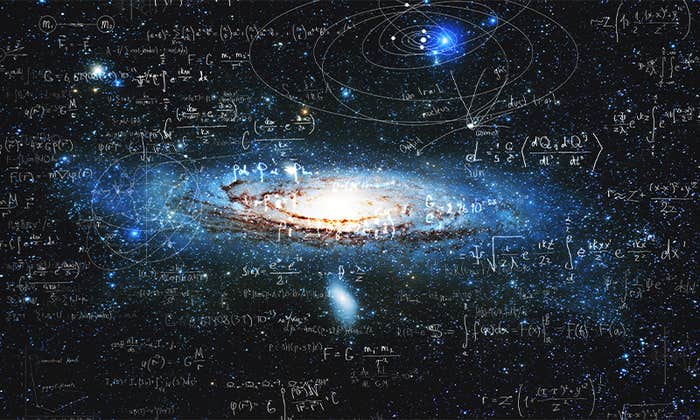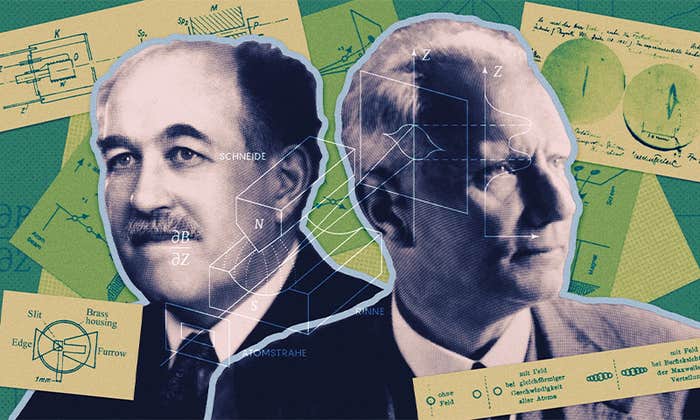Rearrange the following words to tell a coherent life story: A man dies, later he gets married, and finally he is born. Thanks to our built-in temporal sense, it’s pretty straightforward: Tomb always follows womb, it’s never the other way around.
Yet at a fundamental level, time’s origin remains a mystery. “It’s one of the deepest questions at the forefront of science, but when we ask, ‘What is time? Where does it come from?’ it’s not even clear the words make any sense,” says Nima Arkani Hamed, a physicist at the Institute of Advanced Studies (IAS) in Princeton, N.J. “We can barely articulate what a world without time, or physics without time, means.”
Confusing as the absence of time would be, there is mounting evidence that at the most basic level of reality, time is an illusion. Stranger still, laboratory tests with laser lights and advances in our understanding of string theory—the proposed framework positing that particles are composed of small threads of energy—independently point to the idea that time doesn’t really exist.
Little more than a century ago, our picture of time and space was far less complicated. Physicists happily tracked objects across a fixed background set by our three spatial dimensions and marked how fast they moved against a single clock—God’s proverbial stopwatch, that they believed ticked at the same rate no matter where you were in the cosmos. But in the early 20th century, two revolutions in physics disrupted this view.
In the first revolution, Einstein’s theory of relativity wove together time and space into a flexible four-dimensional fabric. That fabric, which Einstein called “spacetime,” could mold itself around massive objects, creating a curvature. Smaller objects could roll down those curves toward the larger masses, investing the universe with a force called gravity. In this new theory of the universe, time was no longer an immutable bystander, but an interconnected dimension enmeshed with space itself. Instead of being that unambiguous dimension against which others could be measured, time was now relative. Einstein’s relativity showed that clocks would tick at different rates depending on their motion through space and their proximity to massive objects that pulled them in with gravitational force.
The second development disrupting our view of time was quantum mechanics, the physics of the subatomic realm. Quantum mechanics revealed that on the smallest scales, reality was strange indeed. For instance, two particles can become “entangled” in such a way that they always act in tandem. An experiment carried out on one will immediately influence its partner, no matter how distant it may be. In other words, the distant particles communicate instantly, apparently defying the rule that nothing can travel faster than the speed of light and the very concept of time itself.
Mounting evidence shows that at the most basic level of reality, time is an illusion, and stranger still, that time doesn’t really exist.
But the real “problem of time,” as it has become known, arose in the 1960s as physicists struggled to combine these two frameworks—each successful at describing its own realm of the universe, either the very tiny or the large. The search for an overarching “theory of everything,” a set of rules that governed objects of all sizes, was on. One of the most famous but controversial hypotheses came from two New Jersey physicists: John Wheeler of Princeton University and Bryce DeWitt of the IAS. Wheeler and DeWitt tried to describe the whole universe through quantum mechanics—that is, they attempted to apply the physics of the very small to planets, galaxies, and other cosmic structures on a mass scale. Many questioned whether their tactics would work, because there had been no evidence to suggest that quantum laws held sway over cosmic distances, notes Marco Genovese, a quantum physicist at Istituto Nazionale di Ricerca Metrologica (INRIM) in Turin, Italy. But it seemed reasonable to at least try to unite the mathematics of the two theories and see what would happen.
When the two physicists tried to combine Einstein’s equations of relativity with quantum physics, they came up with a surprise. Both sets of laws independently featured time as a variable against which events evolved. But when the theories were combined into one, the time variable was literally cancelled out of the mathematical equation. The duo had derived a new equation for how the universe behaved, yet there was no longer a quantity in their mathematical description that could be used to mark out change or the passage of time. “The Wheeler-DeWitt equation says that the universe is stationary and that nothing evolves,” says Genovese. “But, of course, we all experience time and change.”

The conclusion that the universe never changes was clearly wrong. Yet physicists could not find anything wrong with the mathematical steps that Wheeler and DeWitt had taken. At first, it seemed that the pair must have been mistaken to think that the whole cosmos could be described in quantum terms. But there was another intriguing possibility, proposed in the 1980s by physicists Don Page, now at the University of Alberta, in Edmonton, Canada, and William Wooters, at Williams College in Williamstown, Mass.
Page and Wooters decided to apply the controversial concept that the universe as a whole could be treated as a giant quantum object—subject to the same physical laws as electrons, protons, and other tiny particles of the subatomic world. They imagined splicing the contents of the cosmos into two pieces. Because quantum laws prevailed, the pieces would be entangled. Scientists have found that two entangled particles measured in the lab can have equal but opposite values. If one is spinning clockwise, for instance, the other will be spinning counter-clockwise so that, when summed together, the properties cancel each other out. Page and Wooters argued that in similar fashion, each section of their divided cosmos could independently evolve, but because they were entangled, the changes in one would be counter-balanced by the changes in the other. To someone inside one of the sections, time would appear to pass. But to the outside observer, the overall universe would appear static.
While Page and Wooters had offered a theoretical sketch, based on quantum entanglement, for how the cosmos might appear to be stationary to someone peering in from the outside, there seemed to be no way to confirm or rule out their idea. But, in 2013, Genovese and his colleagues performed an experiment to test whether—at least in the lab—it is possible to create a model of the universe in miniature, with just two particles of light, or photons, generated from a laser. The aim of the experiment was to prove that it is possible to create a situation in which a quantum system, when viewed from outside, appeared unchanging, but when observed from within appeared to evolve.
To do the experiment, Genovese set out to monitor the photons’ polarizations—the directions in which they vibrated. If a polarized particle could be made to rotate at a constant rate, then its position at any moment could be used to mark out intervals in time, just like a second-hand on a clock. The team entangled the two photons together, in such a way that their polarizations took on opposing traits. For instance, if the polarization of one was measured to move up and down, the other would vibrate from side-to-side.
“What we are seeing is that at the start of the universe, the notion of time ceases to make sense.”
In order to set their photons’ “second-hands” in motion, the team passed both particles through quartz plates, causing their polarizations to rotate. The amount of rotation was related to the actual time spent within the plates, giving physicists a means of measuring the passage of time. They carried out their experiment repeatedly and in each run they stopped at a different moment and measured the polarization of one of the photons. “By measuring the first clock photon, we became entangled with it,” says Genovese. “That means we became part of that universe and can register the evolution of the second photon against our clock photon.” Vested with this ability, the team confirmed that one photon appeared to change when measured against its partner, in the same way that Wooters and Page believed one part of the universe could be seen to evolve if measured against another portion of the cosmos.
However, Genovese still had to confirm the second part of the hypothesis: that when the entire entangled system was monitored as a whole, from the outside, it would appear static. In this part of the experiment, the team took the point of view of a “super observer” standing outside the universe. This external watcher could never look at the individual state of either photon because by doing so he would become entangled with them, becoming an internal observer. Instead, the observer could only measure the joint state of the pair of photons. The team ran the test many times, stopping at different points. They looked at the two photons as a combined whole and measured their joint polarization. Each time, they ascertained that the two entangled photons were polarized in equal but opposite ways. No matter how much time passed, the two photons were always poised in exactly the same “embrace.” The mini-universe appeared to be static from the outside and completely unchanged. It turns out the so-called “problem of time,” discovered by Wheeler and DeWitt, can be resolved if time is an artifact of quantum entanglement.
Over the past few decades, support for the illusory nature of time has also emerged from string theory, developed in the 1960s to help describe the strong nuclear force that binds elementary particles together within atoms. As they studied the strong force, physicists came up with the idea that subatomic particles, then thought to be the smallest objects in the universe, were in fact themselves composed of tiny vibrating strings.
This new way of perceiving the basic objects in nature had far-reaching consequences. It turned out that string theory was extremely helpful for those like Wheeler and DeWitt, who wanted to unite general relativity with quantum mechanics. Such a unifying framework is needed to explain what the universe was like soon after the Big Bang, when all cosmic matter was squashed into a tiny volume. A unified theory could also reveal what happens at the cores of black holes—the corpses of stars that have collapsed under the force of gravity, compressing matter into a small central point.
Before the discovery of string theory, physicists ran into trouble whenever they tried to combine the equations of general relativity with those of quantum mechanics. The combined mathematics appeared to tell them that infinitely small points in space all around us should contain infinitely large amounts of energy—essentially predicting that we are surrounded by black holes everywhere we turn, which is not true. String theory sidestepped this problem, however, by positing that nothing can be smaller than the size of a string. That meant that its equations never had to worry about regions of space that were smaller than this fundamental limit, eliminating the messy math with its predictions of infinite energies and other impossible results. With string theory, the physics of the very large and the very small appeared as if they could coexist—at least once string theory was finessed.
Yet string size raised new questions about the reality of space, and, in turn, of time itself. This is because string theory says that no experiment, no matter how elaborate, will ever be able to show us what happens at distances smaller than the size of a single string. “What happens at short distances,” explains IAS string theorist Nathan Seiberg, “is an ill-defined concept—maybe space exists, but we can’t measure it, or perhaps there is nothing there to measure at all.” That meant that space may simply not exist below a certain limit. Since Einstein had already shown with his theory of relativity that time is just another dimension, like space, then “if space becomes ambiguous, time must do so too,” says Seiberg. “People often ask: ‘What happened before the Big Bang?’ But what we are seeing is that at the start of the universe, the notion of time ceases to make sense.”
When it comes to cosmic ingredients, quantum entanglement is more fundamental than space and time.
This ambiguity gave string theorists their first inkling that time might not exist at a fundamental level, notes Seiberg. Instead, our experience of time might be constructed from underlying building blocks, much like temperature, which arises from the motion of a collection of atoms. An individual atom does not have a temperature; the concept of hot or cold only has meaning when you measure the average speed of a large number of atoms: Fast moving particles have a higher temperature than slow atoms. In a similar way, there may be fundamental grains that together generate our experience of time. But just what those grains may be, well, “that’s the $64,000 question,” says Seiberg.
Stranger still, later advances in string theory suggest that time’s seeds are sown at the very edges of reality. This idea has its roots in an odd model of a hypothetical universe devised in the late 1990s by string theorist Juan Maldacena, then at Harvard University, who was searching for a mathematical relationship that might connect quantum mechanics and general relativity. He decided that he could get there by using strings.
Maldacena’s imaginary cosmos was shaped like a soup can, but with walls that are infinitely far away. Inside his can, he placed strings and black holes, whose behavior was governed by gravity. On the surface of the can he placed normal subatomic particles that interacted through the laws of quantum mechanics. Although Maldacena’s soup-can universe did not sound much like ours, it helped him visualize how the deepest laws of nature could be connected.
In the model, general relativity held sway in the vast three-dimensional space within the can, while quantum mechanics ruled the particles lining the two-dimensional surface. Maldacena’s hunch was that the two sets of laws were somehow equivalent, and that gravitational events unfolding inside the can would correspond to quantum processes on the surface, like a shadow projected onto the can’s walls. Using this mathematical model, Maldacena indeed found that for every quantum process on the surface, an equivalent event unfolded within the can. Theoretical models developed by Maldacena and others indicate that quantum particles entangled on the surface of the soup can rewrite their patterns by creating tunnels, or “wormholes,” within the inner realm. This suggests that entanglement itself is the fundamental cosmic process generating the emergent properties of space and time.
The idea that both space and time are created by quantum entanglement has been independently bolstered by string theorist Mark van Raamsdonk at the University of British Columbia in Vancouver, who also investigated Maldacena’s soup can model. Using a mathematical model, he found that by gradually eroding particle entanglement on the can’s surface, the spacetime fabric within the can starts to disintegrate as well. This implies that quantum entanglement somehow plays a role in tying the threads of space and time together; without it, the fabric of spacetime itself could not exist.
Maldacena’s model provides more support than ever for the claim that, when it comes to cosmic ingredients, entanglement is more fundamental than space and time. Time, it turns out, is not present at the most basic layer of reality; it springs from fundamental seeds. But while emerging physics suggests time is an illusion, the forces that conjure it remain at large. “My intuition is that it will take more than just a re-working of quantum physics, it will require a breakthrough that will come totally out of left field,” Seiberg says. “Only time will tell what that revolution will be.”
Zeeya Merali is a freelance science writer based in London, and editor for the Foundational Questions Institute, based in the U.S.
















